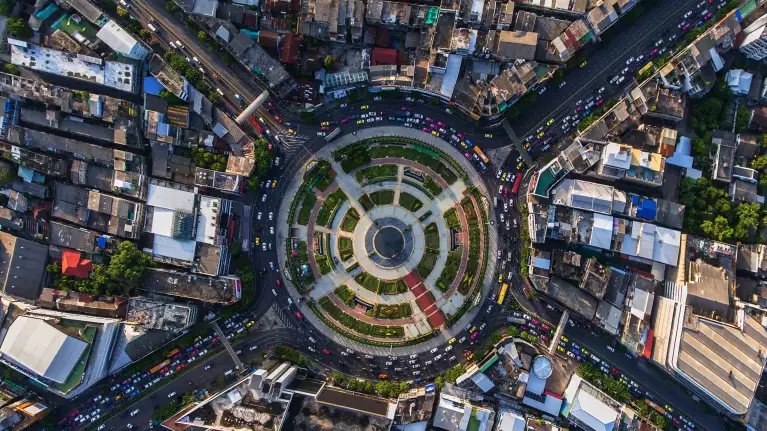The global M&A market remained volatile during the first nine months of 2025, with recovery progressing unevenly across regions. While BCG’s M&A Sentiment Index has recently trended upward in most sectors, ongoing geopolitical tensions, shifting regulations, and macroeconomic uncertainty continue to influence dealmaking conditions.
Some dealmakers have hit pause in response. But many others are moving forward, anchoring deals in clearer theses and distinctive capabilities. Often, this includes a sharper regional focus, which provides some insulation from global volatility.
To better understand these dynamics, BCG asked experts in ten regions to describe the current state of their M&A markets and share insights on recent trends and near-term drivers of deal activity. Here are their perspectives:

The Africa Perspective

Africa’s M&A market has struggled to maintain momentum in 2025 against a backdrop of global volatility and domestic challenges. Despite a modest recovery from the COVID-19 pandemic shock, deal activity has continued to trend downward. Both deal volume and deal value declined during the first nine months of the year, diverging from the modest rebound seen globally. Limited large-scale transactions, dependence on resource-linked sectors, and cautious foreign investor sentiment have weighed on the market.
Increased caution has translated into subdued activity rather than a shift toward smaller deals. Africa’s total deal value fell by approximately 24% compared with the same period in 2024, while M&A transactions targeting African companies dropped by nearly 46%. This stands in sharp contrast to a 10% increase in global deal value over the same period, underscoring Africa’s relative underperformance. Deal volume in Africa also continued its downward trajectory, reflecting persistent investor hesitancy.
However, the picture is far from uniform across the continent, as country-level dynamics matter. Markets showing resilience include Morocco, buoyed by robust private equity activity, and Egypt, benefiting from recent regulatory reforms and large deals, such as the MaxAB–Wasoko merger. Amid the diversity, selective opportunities exist in areas where structural reforms, local investor engagement, or sector-specific momentum provide support.
Several sectors led activity involving large deals in Africa:
- Resource-linked industries dominated transactions, continuing the pattern seen in 2024. Thus far in 2025, the largest deal with African involvement was Gold Fields’ acquisition of Australian Gold Road Resources for $1.8 billion—a rare large African outbound deal. The second largest transaction was another mining-related deal, Harmony Gold Mining’s acquisition of MAC Copper for $1 billion. Other notable recent examples include Gold Fields’ $1.4 billion acquisition of Osisko Mining, Zijin Mining’s $1 billion purchase of Newmont Golden Ridge—the owner of the Akyem Gold Mine project—in Ghana, and Huaxin Cement’s $838 million takeover of Lafarge Africa. These transactions underscore Africa’s continued reliance on mining and construction as main sources of deal activity.
- Energy was another cornerstone of African M&A, as transactions involving hydrocarbon players dominated large-scale activity. This year, Gabon Oil Company acquired Tullow Oil Gabon from Tullow Oil for $300 million. Other recent standout deals include Renaissance SPV’s $2.4 billion acquisition of Shell Petroleum Development Company of Nigeria (announced in 2024) and Carlyle’s intended $945 million purchase of Energean’s Egyptian, Italian, and Croatian portfolio, which was recently canceled after failing to clear regulatory approvals in the agreed time. These deals reflect both brownfield consolidation and private equity firms’ appetite for cash-generating upstream assets. Investors have also been selectively moving into renewables, highlighting Africa’s dual role in supplying conventional energy while positioning itself as a critical player in the global energy transition.
- Telecommunications and media continued to attract significant investor interest, reflecting Africa’s rapid digital adoption. Infrastructure-related telecom deals—including mast and tower carve-outs—continue to draw attention, evidence of the sector’s role as a gateway to Africa’s growing consumer and digital economy. A notable deal in 2025 was Newday Group’s acquisition of Swiftnet’s towers business for $371 million. This followed Vivendi’s $1.8 billion bid in 2024 for MultiChoice Group, a South African pay-TV and streaming leader, underscoring the strategic value of Africa’s media platforms and the broader opportunity in digital connectivity.
Private capital has played a selective but quite visible role in 2024 and 2025. This year, for instance, Development Partners International acquired a majority stake in Compagnie de Produits Chimiques du Maroc, a Casablanca-based manufacturer of agricultural chemicals, from ABC Holding for $110 million. Hennessy Capital’s $530 million investment in Namib Minerals in 2024 reflected the international appetite for Africa’s resources, while Investec’s $447 million acquisition of TalkMed Group signaled interest in scalable health care platforms. These transactions suggest that, even amid a broader downturn in deal volume, Africa continues to attract international private capital in sectors where fundamentals align with long-term growth themes.
We anticipate that African sovereign funds will increasingly drive M&A activity by catalyzing investment and partnering with international investors. Morocco’s sovereign fund, for instance, attracted more international private capital in the first nine months of 2025 than in the previous two decades combined.
BCG’s M&A Sentiment Index points to the technology and energy sectors as drivers of momentum for the rest of the year, aligning with Africa’s structural strengths in renewables, digital adoption, and energy transition investments. The continent’s startup and fintech ecosystem continues to expand, supported by rising digital penetration and growing investor interest in scalable tech-driven business models. Even so, sentiment in Africa has been volatile, reflecting macroeconomic uncertainty, interest rate pressures, and inconsistent confidence levels across industries.
The medium-term outlook remains cautiously positive. Structural drivers such as Africa’s demographic growth, rapid urbanization, and accelerating digital adoption continue to underpin investor interest. Additionally, energy transition dynamics should sustain activity in renewables, mining, and adjacent infrastructure. Moreover, if macro and policy uncertainties ease, Africa will benefit from the ample levels of private capital available globally.
Against this backdrop, we expect dealmakers to adopt a selectively opportunistic stance: focusing on future-ready businesses—particularly in technology, energy, and financial services—while carefully managing geopolitical and market risks.
Africa’s 2025 M&A story is one of contrasts: declining deal values and volumes, yet sectoral resilience in materials and pockets of growth potential in energy, telecommunications, and media. For investors with long-term horizons, Africa remains a market of opportunity—albeit one requiring careful navigation.
The author is grateful to Ouassima El Bouri of BCG’s Transaction Center for her valuable insights and support in the preparation of this article.

The Australia and New Zealand Perspective
Despite geopolitical turbulence and tariff uncertainty, the M&A market in Australia and New Zealand (ANZ) has remained relatively resilient in 2025. Robust inbound activity from both strategic and financial investors reflected global demand for scale and stability. Outbound M&A was more selective, led by companies diversifying into Southeast Asia and North America.
In the first nine months of 2025, ANZ M&A activity broadly mirrored the slowdown across the Asia-Pacific region, albeit with somewhat steeper declines. Total deal value appeared flat year-on-year, but excluding the now-canceled $18.7 billion ADNOC–Santos transaction, it was down 31%. This was worse than the 19% decline seen regionally and in contrast to a 10% rise globally. Deal volume fell 18%, exceeding the 3% contraction across Asia-Pacific and diverging sharply from the 4% decrease worldwide.
Several sectors stand out for large-deal activity:
- Energy and natural resources remained at the forefront of M&A activity, as cross-border investors targeted large-scale natural resource assets. Foreign buyers, particularly from the Middle East and Japan, pursued marquee acquisitions to secure supply chains, while domestic players sought consolidation in renewables and infrastructure. Abu Dhabi’s ADNOC-led consortium made headlines with an $18.7 billion bid for Santos, which would have marked Australia’s largest-ever energy deal had it been completed. Although the proposal was later withdrawn, it highlighted the strong global appetite for Australian liquefied natural gas and upstream resources. Meanwhile, Japan’s Mitsui & Co. invested $5.3 billion to acquire a 40% stake in Rio Tinto’s Rhodes Ridge iron ore project in Australia, underscoring Japan’s strategic intent to secure critical mineral supplies amid ongoing supply chain realignments.
- The industrials and materials sectors remained active, with consolidation across mining and building products shaping the deal landscape. A highlight was South Africa’s Gold Fields’ $2.2 billion acquisition of Gold Road Resources. The deal strengthened Gold Fields’ production profile in Australia and underscored the appeal of scale and cost efficiency in precious metals. Diversification was another prominent theme. For example, Washington H. Soul Pattinson & Co. deepened its long-standing partnership with Brickworks Ltd. by increasing its equity stake. The rationale was to streamline group structures, enhance capital flexibility, and unlock synergies between the two conglomerates’ industrial and investment portfolios.
- The technology, media, and telecommunications sector has remained a focus for M&A, accounting for more than 15% of deal value since 2022. Global strategic acquirers and financial sponsors targeted high-growth digital assets, drawn by their recurring revenues, scalability, and potential for international expansion. In one of the year’s highest-profile technology transactions, private equity firm Lance Capital acquired VGW Holdings, a leading online social gaming company. The deal provided VGW with a deep-pocketed sponsor to back its global expansion ambitions and navigate tightening regulatory oversight, while giving Lance exposure to one of Australia’s most successful digital entertainment exports. US-based CoStar Group acquired Domain Holdings Australia Ltd, one of the country’s leading real estate digital platforms. The deal strengthens CoStar’s Asia-Pacific presence by leveraging Domain’s strong market position and property data assets, while giving Domain access to CoStar’s global technology and client base.
A defining theme of 2025 was the resurgence of take-private transactions. Sponsors and strategic acquirers increasingly targeted companies listed on the Australian Securities Exchange, drawn by reasonable public market valuations and the relative weakness of the Australian dollar. For many mid-cap firms, heightened regulatory and compliance burdens in public markets further tilted the balance toward private ownership, making sponsor-led buyouts and strategic take-private transactions a compelling path.
The ANZ deal environment is also being shaped by significant regulatory reform:
- Australia’s competition regime is being overhauled, with a new mandatory merger control framework set to take effect in 2026. This has prompted bidders to move early to secure certainty ahead of tighter scrutiny. At the same time, the Foreign Investment Review Board has stepped up its review of assets that have national security implications. The potentially protracted approval process, combined with oversight by the Australian Competition and Consumer Commission, is likely to make transactions more challenging to execute.
- New Zealand’s reforms to its Overseas Investment Act aim to streamline approvals for lower-risk foreign investments while maintaining strict oversight of sensitive assets. We expect this shift to ease friction for inbound investors, improve deal certainty, and support M&A in infrastructure, resources, and high-growth sectors.
Regionally, BCG’s M&A Sentiment Index for Asia-Pacific suggests subdued sentiment among dealmakers. M&A activity in Asia-Pacific continues to trail M&A activity in North America and Europe, impacted by geopolitical tensions, policy uncertainty, and tighter regulations.
Looking ahead, ANZ is positioned to remain a resilient and appealing market for M&A. As regulatory frameworks evolve to balance national security and market openness, strategic and financial acquirers are likely to identify attractive and executable deals, particularly in technology, energy transition assets, and infrastructure.
The author is grateful to Ashish Baid of BCG’s Transaction Center for his valuable insights and support in the preparation of this article.

The Brazil Perspective

Brazil’s M&A landscape showed early signs of stabilization in 2025 after three years of sharp decline. While global M&A activity regained modest momentum, Brazil experienced a slower recovery owing to cautious investor sentiment and tighter financial conditions.
Aggregate deal value in Brazil declined by 5% in the first nine months of 2025 compared with the same period in 2024, contrasting with a 10% increase in global dealmaking and a 14% surge across South America. Total disclosed values are still substantially below 2021 levels. However, transaction volume rose modestly by 4% year on year, diverging from a 4% global decline but still trailing the 5% increase in South America. Overall, smaller strategic deals and a limited pipeline of large-scale transactions characterized Brazil’s deal activity. Foreign investors continued to play a significant role, accounting for slightly more than half of the total deal value for Brazilian targets.
Several sectors led large deal activity in Brazil:
- Energy remained Brazil’s most active sector, accounting for roughly one-third of disclosed deal values. The standout transaction was BlackRock’s acquisition of a 70% majority stake in Aliança Geração de Energia from Vale for approximately $1 billion, forming a significant joint venture in hydroelectric generation. In an earlier transaction in 2024, Vale had acquired the remaining 45% in Aliança Geração de Energia for $542 million from its former JV partner Cemig Geracao e Transmissao, a unit of Companhia Energética de Minas Gerais (CEMIG). Other notable deals in the energy space included Verene Energia’s acquisition of Equatorial Transmissão for $921 million and China Merchants Port Holdings’ purchase of a majority stake in Vast Infraestrutura, a deal valued at $665 million. These deals reflect investors’ preference for stable, predictable-return assets and reinforce the energy sector as a cornerstone of Brazilian M&A.
- The materials sector recorded one of the strongest recoveries across Brazilian M&A in 2025. It accounted for roughly one-quarter of total disclosed year-to-date deal value, representing approximately a sixfold increase over the same period in 2024. Several large portfolio realignments led the activity, including Sherwin-Williams do Brasil’s acquisition of BASF Coatings for approximately $1.15 billion, one of the country’s largest transactions of the year. This is followed by MMG’s purchase of Anglo American Níquel Brasil for $500 million and Corex Holding’s acquisition of a group of zinc and lead ore mining operators from BHP Group for approximately $465 million.
- The consumer sector, spanning personal care to agribusiness, was the largest target area for Brazilian acquirers. The year’s largest transaction was Suzano’s acquisition of a 51% stake in Kimberly-Clark IFP Newco for approximately $1.73 billion, expanding its presence in hygiene and household products. Other notable deals included Global Eggs’ $1.1 billion acquisition of Hillandale Farms East and Cocal’s purchase of two sugarcane mills from Raízen for $285 million.
Private equity activity remained subdued in 2025 due to high financing costs. The largest transaction, noted above, was BlackRock’s $1 billion acquisition of the hydroelectric generation company, Aliança Geração de Energia. Another significant deal was CVC Capital Partners’ acquisition of GSH Corp Participações in the health care sector.
In contrast, venture capital funds showed greater risk appetite, especially for scalable technology businesses. Investors demonstrated a willingness to pursue larger transactions, including Partners Group’s $150 million investment in cloud-software developer Omiexperience; Orion Mine Finance’s $120 million funding in New Wave Tech, a developer of mining and steel technology; and General Atlantic’s $117 million growth investment in software platform Starian.
BCG’s M&A Sentiment Index for the Americas shows a positive trend for the final months of 2025, though still trailing Europe and the historical average. Geopolitical tensions, policy uncertainty, and evolving regulatory frameworks continue to be major discussion points among dealmakers.
The outlook for Brazil’s M&A is cautiously positive for the remainder of 2025. Deal activity is expected to remain stable through the end of the year as fiscal caution and tighter financial conditions continue to temper investors’ risk appetite. Energy and materials sectors should continue to attract strategic and cross-border interest, while private equity funds are likely to remain selective until monetary conditions ease.
Looking ahead to 2026, deal momentum may slow as Brazil’s election cycle introduces policy uncertainty. However, activity could rebound strongly later in the year depending on the political outcome. The election results and ensuing policy shifts will play a key role in shaping market conditions, investor sentiment, and strategic priorities.
The author is grateful to Francesca Pietrogrande of BCG’s Transaction Center for her valuable insights and support in the preparation of this article.

The Germany Perspective

Germany’s M&A market stabilized in 2025 despite changing tariff policies and economic and political uncertainty. Deal values were low but steady, consistent with positive global trends. Several key industries notably diverged from the overall market pattern, showing significant dealmaking activity.
Acquirers in Germany shifted toward larger, more transformative transactions, and as a result, aggregate deal values rose even as deal volumes declined. In the first nine months of 2025, Germany’s total deal value increased by 45% compared with the same period in 2024, contrasting with a global increase of only 10% and a 5% decline across Europe. Deal volume in Germany fell by 10%, slightly worse than the global decline of 4% and Europe’s overall 4% decrease.
Several sectors saw significant activity involving large deals in Germany:
- Telecommunications, media, and technology acquisitions were particularly notable this year. Acquisitions of technology companies played an important role in Germany’s M&A landscape during the first nine months of 2025. In one of the year’s largest German deals, Siemens acquired Dotmatics for $5.1 billion, strengthening its position in industrial software. Additionally, Infineon Technologies bought Marvell Technology’s automotive ethernet business in a deal valued at $2.5 billion. In the media industry, MFE secured a majority stake in publicly listed ProSiebenSat.1in a deal that valued the company at $3.4 billion.
- Germany’s health care companies remain an important driver for M&A activity, with targets accounting for roughly one-third of total deal value in the first nine months of 2025. In a standout transaction, Merck KGaA, a German pharmaceuticals and health care company, acquired SpringWorks Therapeutics for $3.9 billion. Also noteworthy was private equity firm CapVest’s bid to acquire biosimilars and generics player Stada, previously considered an IPO candidate.
- Despite sluggish consumer sentiment, M&A deals in the consumer and travel industry have also been prominent. In July, China-based JD.com launched a takeover offer to acquire Germany-based electronics retailer Ceconomy in a deal that values the company at $4.5 billion. Additionally, private equity firm PAI Partners acquired hotel chain Motel One for $1.9 billion, and a consortium led by Stonepeak Partners acquired the JET gas station chain for $1.7 billion.
Private equity activity remained resilient in 2025. Marquee transactions included the above-mentioned deals by PAI Partners and Stada’s acquisition by CapVest for a valuation rumored to exceed $10 billion. Early signs of recovery emerged in the IPO market as well, with listings from companies such as Pfisterer and Ottobock. The pipeline of German IPO candidates is robust, suggesting additional listings are likely in 2026.
Regionally, BCG’s M&A Sentiment Index for Europe indicates generally improving sentiment among dealmakers over the past three years. Although M&A sentiment in Europe has experienced some volatility, it remains more positive than that in North America and Asia-Pacific, reflecting the continent’s relative stability in the increasingly volatile global environment.
The outlook for German M&A remains selectively positive for the remainder of 2025. Although global tariff and policy uncertainties cloud the picture, government infrastructure investments, strong corporate balance sheets, abundant private equity funding, and ongoing business model innovations will likely support deal momentum. Dealmakers are expected to prioritize future-ready businesses, particularly within the telecommunications, media, technology, and health care sectors.
The author is grateful to Daniel Kim and Duc Loc Nguyen of BCG’s Transaction Center for their valuable insights and support in the preparation of this article.

The India Perspective
India’s M&A market has shown resilience in 2025 amid continued global volatility. Despite changing tariff policies and economic uncertainty, India’s deal volumes remained stable, mirroring broader global trends. Domestic consolidations, strong foreign investment inflows, and robust private equity participation underpinned this stability.
However, increased caution is evident. Acquirers have shifted toward smaller, more targeted transactions to mitigate risk, resulting in lower aggregate deal values. In the first nine months of 2025, India’s total deal value fell by 20% compared with the same period in 2024. This contrasted with a global increase of 10%, although the Asia-Pacific region experienced a similar 19% decline. Despite this reduction in value, India’s deal volume rose by 12%, sharply diverging from the 5% decline globally and the 3% decline across Asia-Pacific.
Activity involving large deals in India was broad-based, led by five sectors:
- Acquisitions of technology, media, and telecommunications companies continued to dominate India’s M&A landscape. These transactions accounted for more than 15% of total deal value in India during the first nine months of 2025. Private equity funds, flush with dry powder, remain drawn to India’s high-margin tech businesses. In one of the year’s largest deals, France-based Capgemini agreed to acquire India-based WNS for $3.5 billion. The deal creates a global leader in agentic AI for business process management. Additionally, New Mountain Capital acquired a majority stake in Access Healthcare Services, reflecting continued investor interest in specialized tech services such as revenue cycle management.
- The health care sector saw significant activity driven by consolidation and scale-building strategies. Advent International’s merger of Suven Pharma with Cohance Lifesciences highlighted ongoing pharma sector consolidation. Additionally, nonpharma health care segments attracted significant interest, including KKR’s majority stake acquisition in oncology provider Healthcare Global Enterprises. A consortium of Faering Capital, General Catalyst Partners, Think Investments, and Avataar acquired a majority stake in multispecialty hospital chain PB Healthcare Services.
- Energy continued to draw strong investor interest in 2025, with activity spanning traditional renewables and emerging technologies. Notable transactions included a TPG-led consortium’s $500 million acquisition of Siemens Gamesa’s wind energy portfolio and Actis’s estimated $163 million purchase of solar player Stride Climate Investments. Venture capital also showed growing interest in emerging themes such as electric-vehicle battery infrastructure—including battery swapping and charging networks—as well as the broader battery manufacturing value chain.
- India’s financial services sector attracted greater attention from foreign investors. Notably, in May, Japan’s Sumitomo Mitsui Financial Group acquired a 20% stake in Yes Bank for $1.6 billion, one of the largest cross-border commercial banking deals. In another recent landmark transaction, Emirates NBD is buying a $3.1 billion majority stake in RBL Bank. Private equity interest surged in nonbank financial companies, exemplified by Bain Capital’s acquisition of an 18% stake in Manappuram Finance. Meanwhile, the Indian government has invited bids for its 61% stake in IDBI Bank, a transaction valued at approximately $5 billion, which is expected to draw strong participation by foreign investors. The government is also expected to fast-track stake sales in public sector banks to raise capital and comply with the Securities and Exchange Board of India’s mandate for a minimum 25% public shareholding by August 2026.
- The number of deals with industrial targets increased significantly in the first nine months of 2025, despite global economic uncertainty. In a standout transaction, Akzo Nobel, a Dutch company specializing in paints and coatings, divested its entire India business to JSW Group for $1.1 billion. The acquisition significantly strengthens the position of JSW, which entered the paints business in 2019, in a highly competitive market.
Aside from an approximately $750 million investment in Haldiram Snacks Food by Temasek, investor interest in other sectors, including consumer segments, was cautious.
Regionally, BCG’s M&A Sentiment Index for Asia-Pacific indicates subdued sentiment among dealmakers. Asia-Pacific M&A activity continues to trail North America and Europe, weighed down by geopolitical tensions, policy uncertainty, and tighter regulations.
For India specifically, the M&A outlook for the remainder of 2025 is selectively positive. Although tariff uncertainty clouds the picture, robust corporate balance sheets, government-led reforms, heightened foreign investor interest, and the availability of substantial private equity funds will likely support deal momentum.
We expect dealmakers to focus on future-ready businesses, including renewables, fintech, digital technologies, and health technologies.
The author is grateful to Ashish Baid and Francesca Pietrogrande of BCG’s Transaction Center for their valuable insights and support in the preparation of this article.

The Japan Perspective

Japan has been one of Asia’s most dynamic M&A markets in 2025. The number of M&A transactions involving Japanese companies increased by 6.3% in the first nine months of 2025 compared with the same period in 2024, reaching an all-time
The robust performance in 2025 builds on the momentum of historic highs in 2024, driven by sweeping corporate governance reforms, activist investor pressure, and an acceleration of portfolio restructuring among conglomerates. The Tokyo Stock Exchange’s 2023 directive on capital efficiency forced companies to reassess business portfolios, leading to a wave of divestitures and take-private transactions. Meanwhile, shareholder activism has hit record levels, eroding traditional cross-shareholdings and opening the door to more contested transactions.
Although many sectors have contributed to the sharp rise in Japan’s M&A activity, two stand out as the most active:
- The technology, media, and telecommunications sector saw robust activity. Dealmaking was motivated by digital and AI transformation and corporate restructuring as companies repositioned their portfolios to capture emerging opportunities. Telecom operators diversified beyond traditional connectivity into financial services, retail, and data analytics, aiming to build comprehensive digital ecosystems. Notable deals included NTT Docomo’s acquisition of SBI Sumishin Net Bank, marking its strategic entry into banking and financial technology. Similarly, KDDI strengthened its consumer presence by taking a management role in convenience store chain Lawson, while Docomo’s acquisition of marketing research firm Intage highlighted growing interest in data-driven service businesses. These transactions underscore the sector’s strategic shift toward broader digital economy opportunities.
- The automotive industry is experiencing accelerated consolidation. Companies seek to maintain competitiveness amid shifting global supply chains, trade uncertainties, and the transition toward electric and connected vehicles. The industry’s survival instincts are prompting alliances and integrations among long-standing rivals. The marquee transaction was the merger of Hino Motors and Mitsubishi Fuso, aimed at combining resources to boost scale, technological innovation, and cost efficiency in the commercial vehicle sector. Likewise, the partnership between Niterra (formerly NGK Spark Plug) and Denso reflects the growing drive among component manufacturers to pool R&D capabilities and prepare for next-generation mobility solutions. These moves illustrate how Japan’s automakers and suppliers are reshaping their business models to adapt to decarbonization, digitization, and intensifying global competition.
Japanese corporations continued to pursue acquisition opportunities abroad in 2025, with financial institutions and large conglomerates leading the charge. Backed by strong balance sheets and access to low-cost capital at home, Japanese megabanks and insurers are seeking higher-yield opportunities in the US and Europe. Recent landmark transactions include Meiji Yasuda Life’s $2.3 billion acquisition of LG’s US protection business and Mizuho Financial Group’s expansion in the European investment banking space through the acquisition of Augusta & Co. These deals underscore Japanese companies’ growing appetite for stable, cash-generating assets in developed markets, as they seek to diversify geographically and capture value in sectors such as financial services, insurance, and technology infrastructure.
More broadly, BCG’s M&A Sentiment Index for the Asia-Pacific region indicates subdued sentiment among dealmakers. M&A activity in Asia-Pacific continues to trail that in North America and Europe, weighed down by geopolitical tensions, policy uncertainty, and tighter regulations.
Looking ahead in Japan, corporate restructuring should remain a dominant theme as conglomerates streamline operations and sharpen their focus on capital efficiency. We also expect outbound acquisitions to stay strong, with Japanese corporations pursuing diversification in Europe and North America. Supported by record liquidity, mounting activist pressure, and favorable policy reforms, Japan is likely to remain one of the world’s most dynamic dealmaking environments into 2026.
The author is grateful to Ashish Baid of BCG’s Transaction Center for his valuable insights and support in the preparation of this article.

The Middle East Perspective

The Middle East’s M&A market displayed strong momentum in the first nine months of 2025, overcoming global headwinds and market volatility. Deal volume exceeded historical averages, growing by 13%, versus flat or declining activity observed in many other regions. Aggregate deal value rose dramatically, increasing 58% year over year, in sharp contrast to the 10% increase globally. This resilience was largely driven by sovereign wealth funds, strategic diversification beyond hydrocarbons, and targeted inbound investments.
Several sectors led activity involving large deals in the Middle East:
- Energy remained at the core of the region’s M&A activity in 2025, as state-backed players pursued both domestic consolidation and outbound acquisitions to secure strategic assets. Notably, ADNOC, the state-owned oil company of the Emirate of Abu Dhabi, acquired Nova Chemicals Corp for $13.4 billion. This was one of the year’s largest transactions and reinforced the UAE’s international expansion in chemicals. On the domestic front, ACWA Power’s $693 million purchase of Al Ezzel O&M Company highlighted consolidation in power generation and utilities. These moves reflect the resilience of hydrocarbons and the region’s gradual pivot toward renewables, as national champions position themselves for the global energy transition.
- Industrials played a central role in the Middle East’s diversification strategy, as governments and sovereign wealth funds continued to build capabilities beyond hydrocarbons. A notable example was ADQ’s $925 million acquisition of logistics company Aramex, underscoring the consolidation of critical supply chain infrastructure. Such moves reflect a long-term push to establish the Middle East as a hub for industrial and logistics services, reducing dependency on energy revenues while enhancing global competitiveness.
- Technology, media, and telecommunications (TMT) gained momentum in 2025, positioning the sector as a new pillar of regional deal activity. A standout deal was Saudi Arabia’s Savvy Games Group acquisition of Niantic’s games business for $3.5 billion, one of the largest digital transactions globally and an indication of the region’s ambitions to become a leader in gaming and digital entertainment. Emirates Telecommunications Group’s $855 million acquisition of Serbia Broadband expanded the region’s influence into the European telecom market. These transactions signal that Middle Eastern acquirers are deploying capital to capture growth in digital platforms, connectivity, and entertainment, consistent with broader national digital transformation agendas.
The Middle East continues to attract global and domestic private capital, with sovereign wealth funds acting as key engines of deal flow. Mubadala’s $3.3 billion acquisition of CI Financial Corp—announced in November 2024 and closed in August 2025—illustrates how sovereign wealth funds have expanded beyond the region into financial services. At the same time, international investors have pursued midsize opportunities in sectors such as environmental services and real estate.
Entering the final months of 2025, the Middle East stands out as one of the most active global M&A markets. Sovereign wealth funds provide a deep pool of liquidity that can sustain deal flow regardless of global cycles. Government-led strategies continue to channel capital into the industrials and technology sectors, providing a counterweight to the region’s traditional reliance on hydrocarbons. Meanwhile, selective but persistent foreign interest across TMT, financial services, and health care demonstrates the region’s dual appeal as a market supporting growth and diversification.
Resilient capital flows and strategic repositioning are driving the Middle East’s 2025 M&A performance. With deal values surging even as global activity remains muted, the region stands out as a relative outperformer. Energy and industrials dominate, but rising activity in TMT and renewables signals a gradual shift in portfolio composition. For global investors, the region remains a market of scale and liquidity; for local champions, it is a launching pad for global expansion.
The author is grateful to Ouassima El Bouri of BCG’s Transaction Center for her valuable insights and support in the preparation of this article.

The Southeast Asia Perspective

Dealmaking in Southeast Asia remained subdued in 2025 amid shifting tariff policies and geopolitical uncertainty. However, the region showed greater resilience than the broader Asia-Pacific market. Deal value declined 7% year-over-year in the first nine months, significantly less than the 19% drop across Asia-Pacific. Deal volume in Southeast Asia ticked up 2%, outperforming Asia-Pacific’s 3% decline and signaling steady investor confidence and deal activity despite macroeconomic headwinds.
The pullback in deal value reflects ongoing caution among dealmakers, particularly around large-scale transactions. Even so, optimism is building, driven by a strong pipeline, more realistic valuations, and rising domestic consolidation.
Industrials, consumer, and technology sectors are among the most active and resilient segments:
- Industrial and material targets remained important acquisition opportunities in 2025, accounting for a third of the region’s total deal value. Abbot Point Port in Australia, owned and run by Carmichael Rail and Port Singapore Holdings, was acquired by Adani Ports, India’s largest integrated transport utility, in a landmark all-share transaction valued at $2 billion. The deal strengthens Adani’s international strategy by opening new export markets in Singapore and Australia and securing long-term contracts with strategic customers.
- Food and agribusiness transactions have been prominent in 2025 as companies sought scale and supply-chain resilience. A standout deal was the Saudi Agricultural and Livestock Investment Company’s $1.8 billion acquisition of Olam Agri Holdings, a Singapore-based food and agriculture giant. The deal underscores ongoing strategic interest from Middle Eastern investors in securing long-term food security and capitalizing on Asia’s consumption growth. Alongside such large-ticket activity, consumer-facing businesses across Southeast Asia continue to attract strategic and financial sponsors, with cross-border inflows expected to remain strong through 2026.
- Technology remained the leading driver of M&A, buoyed by the region’s rapid digital adoption, the growth of AI-driven solutions, and continued demand for digital infrastructure. One marquee transaction was Diginex’s $2 billion acquisition of Singapore-based Resulticks, a provider of AI-powered real-time audience engagement tools. This landmark deal highlighted international appetite for the region’s fast-scaling digital firms. Beyond headline transactions, smaller investments in e-commerce, fintech, and software-as-a-service companies signaled that technology remains central to corporate growth strategies and cross-border expansion in the region.
Singapore remains the region’s M&A hub, accounting for more than 60% of deals in the first nine months of 2025. Vietnam ranked second, as investors selectively pursued opportunities in the automotive, technology, and health care sectors, despite tariff-related uncertainty. Indonesia also showed signs of renewed momentum, highlighted by activity in natural resources and consumer businesses. Its newly launched sovereign wealth fund, Danantara, is expected to catalyze transactions in the coming years. Taken together, these markets underscore the diversity of deal drivers across the region, from Singapore’s cross-border hub status to Vietnam’s supply-chain appeal and Indonesia’s resource-led growth.
In the broader Asia-Pacific region, BCG’s M&A Sentiment Index indicates subdued sentiment among dealmakers. Asia-Pacific M&A activity continues to trail North America and Europe, weighed down by geopolitical tensions, policy uncertainty, and tighter regulations.
Although Southeast Asia’s M&A market slowed in 2025, conditions are aligning for a recovery. With valuations normalizing, financial sponsors and sovereign wealth funds are expected to re-engage, driving consolidation across digital infrastructure, renewable energy, and health care. GDP is projected to expand by 4.3% in 2026, underscoring the region’s strong fundamentals. Coupled with a maturing regulatory environment and sustained cross-border interest, Southeast Asia remains well-positioned to attract mid-market M&A globally.
The author is grateful to Ashish Baid and Duc Loc Nguyen of BCG’s Transaction Center for their valuable insights and support in the preparation of this article.

The UK Perspective

The UK’s M&A market experienced another pause in momentum in 2025. Amid ongoing uncertainty, acquirers have pursued smaller, targeted transactions to mitigate risk, causing aggregate deal value to fall more sharply than deal volume. During the first nine months of 2025, UK deal value declined by 35% compared with the same period in 2024, sharply contrasting with a 10% increase globally and a 5% decline in Europe. Concurrently, deal volume in the UK fell by 11%, a steeper decline than the global average of 4% and Europe’s overall 4% reduction.
Several key industries bucked the overall market trend with noteworthy large deals:
- In materials and mining, the $20.1 billion combination of UK-based Anglo American and Canada-based Teck Resources was among the year’s largest transactions. The merger created a global mining and natural resources leader and a top-five copper producer worldwide. This strategic move followed Anglo American’s substantial portfolio restructuring after the previous year’s attempted takeover by BHP.
- Dealmaking in the financial services and insurance industries remained active, mirroring broader European trends, especially in Italy and France. Notable transactions included the acquisition by Spain’s Banco Santander of UK-based TSB Banking Group for $3.9 billion, and the entry of Canada’s Brookfield into the UK pension risk market through its $3.0 billion takeover of Just Group. In another major move, Athora Holding acquired Pension Insurance Corporation (PIC Group) in a deal valued at $7.8 billion, establishing PIC as its core UK insurance platform.
- Despite tepid consumer sentiment, dealmakers pursued consumer product and services targets, which accounted for roughly one-fifth of total deal value in the first nine months of 2025. In a standout transaction, Deliveroo, the UK food delivery company, was acquired by its US peer DoorDash for $3.6 billion. Private equity firm Advent’s bid to acquire Reckitt Benckiser’s Essential Home business for $4.8 billion was another notable deal. Although consumer remains the UK’s second most active sector by target volume and by acquirer activity, overall deal value in the category is only around 10% of what it was during the peak year of 2018 and continues to make up for years of very low activity following COVID-19.
Private equity activity remained robust. KKR and an Advent-led consortium engaged in competitive bidding for precision instrumentation company Spectris, ultimately valuing the business at more than $5.5 billion. KKR also participated in a significant deal involving OSTTRA Group, valued at $3.1 billion.
Regionally, BCG’s M&A Sentiment Index for Europe indicates generally improving sentiment among dealmakers over the past three years. Although Europe’s M&A sentiment has experienced some volatility, it remains more positive than that in North America and Asia-Pacific, reflecting the continent’s relative stability in an increasingly uncertain global environment.
The UK’s M&A outlook for the remainder of 2025 is cautiously optimistic. Strong corporate financial positions, abundant private equity capital, and the need for innovative business models should promote deal momentum. Dealmakers are expected to focus on future-ready businesses, with materials and financial institutions ranking among the most attractive sectors.
The author is grateful to Daniel Kim and Francesca Pietrogrande of BCG’s Transaction Center for their valuable insights and support in the preparation of this article.

The US Perspective
US M&A activity in 2025 has shown signs of recovering, with deal value increasing amid market volatility and uncertainty. Despite optimism at the end of 2024, a full recovery has not yet materialized, as geopolitical instability and shifting tariff policies stalled many deals. An improving interest rate environment could boost M&A activity toward the end of the year and into early 2026.
Although larger deals have returned across sectors, overall transaction volume has declined in 2025. During the first nine months of the year, US deal value rose by 21% compared with the same period in 2024, outpacing the global increase of 10%. However, US deal volume fell by 6%, in line with the global decline of 4%.
Several sectors led large deal activity in the US:
- Industrials targets accounted for approximately one-fifth of total US deal value in the first nine months of 2025, despite global economic uncertainty. Notable transactions included the railway merger between Union Pacific and Norfolk Southern, valued at $71.5 billion, and the acquisition of Chart Industries by Baker Hughes for $9.6 billion, which followed Flowserve’s $7.3 billion bid two months earlier.
- The technology, media, and telecommunications sector accounted for more than one-quarter of total US deal value, registering increased M&A activity for the second consecutive year. Key deals included Alphabet’s $32 billion acquisition of software company Wiz and Palo Alto Networks’ $25.1 billion acquisition of CyberArk. In addition, Charter Communications acquired Cox Communications for $24.1 billion, with an estimated enterprise value of $34.5 billion.
- The consumer sector saw noteworthy large deals, even as new tariff announcements in the second quarter of 2025 created significant uncertainty. An example is Keurig Dr Pepper’s $18.1 billion acquisition of JDE Peet’s, followed by a restructuring into separate beverage and coffee businesses. Additionally, Lowe’s acquired Foundation Building Materials for $8.8 billion, marking notable retail activity.
- Energy sector transactions continued to reshape the market, with substantial deals in both power utilities and oil and gas. Large acquisitions included Constellation Energy’s $26.9 billion acquisition of Calpine and NRG Energy’s $12.5 billion purchase of LS Power’s energy portfolio.
Private equity firms executed several significant take-private transactions. In September, an investor group comprising Silver Lake Group, Saudi Arabia’s Public Investment Fund, and Affinity Partners announced a $55 billion agreement to acquire Electronic Arts. If completed, it will be the largest take-private transaction ever. Other significant de-listing deals included Sycamore Partners’ $12.8 billion acquisition of Walgreens and Thoma Bravo’s $11.6 billion purchase of Dayforce.
Regionally, BCG’s M&A Sentiment Index for the Americas shows a positive trend for the final months of 2025, though still trailing Europe and the historical average. Geopolitical tensions, policy uncertainty, and evolving regulatory frameworks remain key considerations for dealmakers. For the US specifically, the M&A outlook remains more positive than earlier in the year, despite near-term policy uncertainty and the federal government shutdown in October. Companies hold substantial cash reserves and robust balance sheets, and private equity investors have considerable funds ready to deploy. These factors are expected to support continued deal momentum. Dealmakers are likely to pursue transformative deals and strategic acquisitions to restructure and expand their portfolios.
The author is grateful to Thomas Endter of BCG’s Transaction Center for his valuable insights and support in the preparation of this article.










